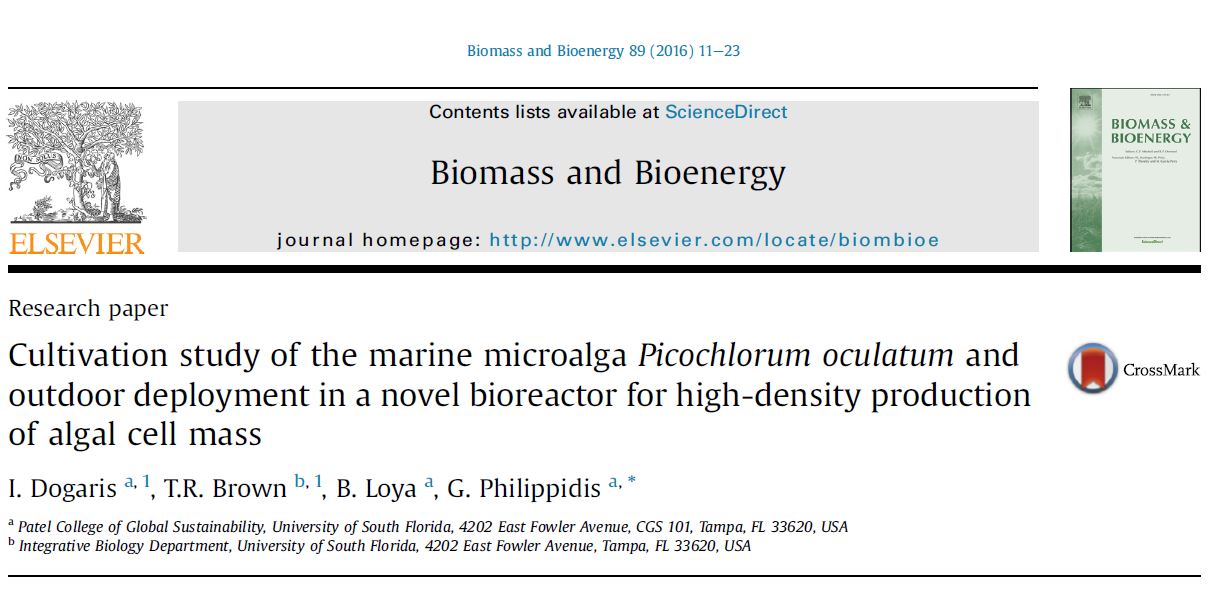Our new paper on algal research got published in “Biomass & Bioenergy” journal!
Dogaris I.*, Brown T.R.*, Loya B., Philippidis G. (2016) Cultivation study of the marine microalga Picochlorum oculatum and outdoor deployment in a novel bioreactor for high-density production of algal cell mass. Biomass Bioenergy 89 pp. 11-23 (*contributed equally)
http://www.sciencedirect.com/science/article/pii/S0961953416300393
Abstract
Microalgae are considered a promising source of renewable diesel and jet fuel. Currently, large-scale microalgae cultivations are performed in open ponds because of their low capital and operating costs, but they generally suffer from low cell mass yield and high risk of contamination. A novel, cost-effective, and modular horizontal bioreactor (HBR) for algae cultivation was developed, as described in the present study. The HBR was designed to keep costs low and was engineered to minimize water and energy use while enhancing CO2 and nutrient uptake. The selected marine microalgal strain, Picochlorum oculatum (Nannochloris oculata), has shown potential for biofuel production. A series of controlled indoor growth experiments was first performed to identify the appropriate P. oculatum growth conditions before demonstrating the HBR performance. Supplying CO2 continuously or by pH-control (pulsed) did not affect culture progression. Growth on urea and nitrate yielded comparable results, while ammonium was less effective. Varying inoculum size from 10% to 15% or 20% had no significant effect on lag time and final cell concentration and comparable growth was measured in the 7–8 pH range. The 150-L HBR’s performance was successfully demonstrated outdoors by growing P. oculatum at the identified growth conditions selected to reduce operating costs (pH-controlled CO2, pH 7.5, 10% inoculum, and nitrate). High-density growth was achieved without any contamination issues in outdoor HBR cultivations over 68 days in central Florida during two consecutive growth cycles.
